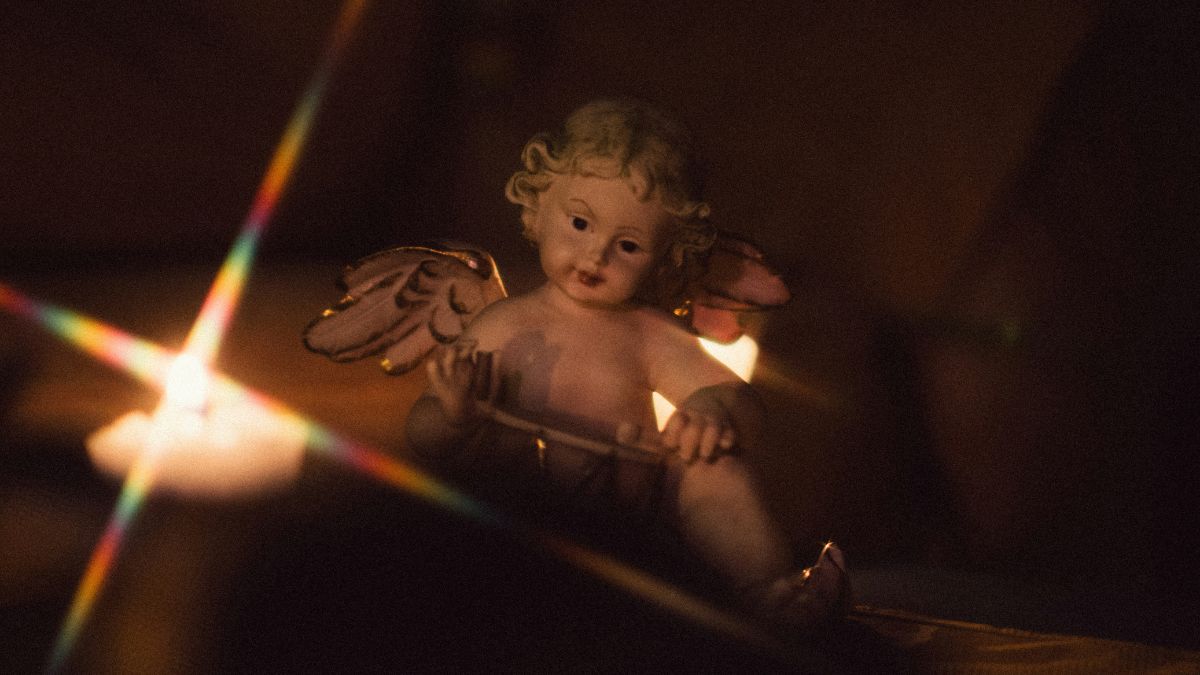TOPIC
Unveiling the Kasha Paprocki Cult: Beliefs, Practices, and Mysteries

Introduction to the Kasha Paprocki Cult
Hidden away from the prying eyes of mainstream society lies a fascinating world: the Kasha Paprocki Cult. This enigmatic group has captured the imagination of many with its unique beliefs and rituals. But who are these people? What do they believe, and why have they drawn both followers and critics alike?
In this exploration, we will peel back the layers surrounding the Kasha Paprocki Cult to uncover their origins, core doctrines, and practices that set them apart. We’ll delve into controversies that add intrigue to their narrative while sharing personal accounts from those who once walked among them. Join us on this journey as we navigate through mysteries, revelations, and ultimately a deeper understanding of diverse belief systems in our ever-evolving world.
The Origins and History of the Cult
The Kasha Paprocki Cult traces its roots to the late 20th century. It emerged in a rural area, captivating those seeking alternative spiritual paths.
The founder, known as Kasha Paprocki, claimed to have received divine insights during a profound meditative experience. This revelation sparked interest among local seekers of truth and enlightenment.
As word spread, more individuals joined the movement, drawn by promises of personal transformation and community support. The cult’s gatherings often featured unique rituals that blended various spiritual practices.
Over time, Kasha’s teachings evolved into an intricate system of beliefs focused on self-discovery and metaphysical exploration. Controversies arose with the rise in membership; skeptics questioned its legitimacy while followers felt empowered by their shared experiences.
This dynamic history shaped not only the identity of the cult but also influenced broader discussions around spirituality in contemporary society.
Core Beliefs and Practices of the Kasha Paprocki Cult
The Kasha Paprocki Cult centers around a deep connection to nature and the universe. Followers believe that understanding these forces can lead to spiritual enlightenment. Rituals often incorporate elements of earth, water, fire, and air.
Meditation plays a significant role in their practice. Members gather regularly for sessions aimed at connecting with higher consciousness. These gatherings foster community bonds while enhancing individual growth.
Another core belief is the importance of personal experience over dogma. Each member is encouraged to explore their own spirituality freely without rigid guidelines or rules imposed from above.
Sacred texts are revered but interpreted subjectively. This fluid approach allows individuals to find meaning that resonates personally rather than conforming strictly to established doctrines.
Ceremonies often take place during celestial events, celebrating the cycles of life and death as part of a larger cosmic dance. This perspective cultivates respect for all living beings and promotes harmony within oneself and the wider world.
Controversies and Mysteries Surrounding the Cult
The Kasha Paprocki cult has long been shrouded in controversy. Many outsiders question its practices and motives, often labeling it a sect rather than a legitimate belief system.
Allegations of manipulation and emotional coercion have surfaced over the years. Former members recount experiences that paint a troubling picture of leadership dynamics within the group.
Rumors swirl about secret rituals held under the cover of darkness. These supposed ceremonies are said to involve esoteric teachings not disclosed to newcomers, adding layers to their mystique.
Moreover, the cult’s financial dealings raise eyebrows among skeptics. Reports suggest that funds flow into obscure projects with little transparency.
This secrecy fuels curiosity yet also fosters distrust among potential followers and critics alike. The complexities surrounding these controversies only deepen as new information emerges from both sides of the debate.
Personal Stories from Former Members
Many former members of the Kasha Paprocki cult share profound experiences that reveal a complex tapestry of emotions. Some describe their initial attraction to the community as a search for belonging and purpose.
One individual, who joined in their early twenties, felt an overwhelming sense of acceptance. They were drawn in by shared beliefs and communal activities. Yet, as time passed, they began to notice underlying tensions within the group.
Another ex-member recounts moments filled with doubt. Despite being surrounded by like-minded individuals, feelings of isolation crept in during late-night rituals. The stark contrast between public devotion and private misgivings was jarring.
A third voice speaks candidly about leaving behind friends who remained devoted to Kasha Paprocki’s teachings. The emotional toll was significant but ultimately necessary for personal growth and freedom from dogma. Each story unveils layers of complexity found within this enigmatic cult experience.
The Future of the Kasha Paprocki Cult
The Kasha Paprocki Cult stands at a crossroads. As societal norms shift, so does the perception of unconventional belief systems. Many members are seeking to redefine their identity within a rapidly changing world.
Digital platforms play a crucial role in this evolution. Online communities allow for greater interaction and sharing of ideas among believers and skeptics alike. The cult’s teachings may adapt to resonate with younger generations who crave authenticity.
Moreover, recent controversies have sparked conversations about transparency and accountability within the group. This could lead to reforms that make beliefs more accessible while fostering open dialogue.
As interest grows, public scrutiny intensifies. How will leaders navigate this landscape? Will they embrace change or cling to tradition? The coming years promise intriguing developments in the Kasha Paprocki movement’s journey forward.
Conclusion: Understanding and Acknowledging Different Belief Systems
Understanding the Kasha Paprocki cult requires an open mind. Every belief system reflects a unique perspective on life and spirituality. The practices, rituals, and teachings of this group may seem unusual or even perplexing to outsiders. Yet, for its members, they provide meaning and community.
Navigating through the complexities surrounding such groups can be challenging. It’s essential to approach them with curiosity rather than judgment. Personal stories from former members highlight both positive experiences and struggles within the cult’s environment.
By acknowledging diverse belief systems like that of the Kasha Paprocki cult, we foster empathy and dialogue. This understanding can lead us to appreciate our shared humanity while respecting individual journeys in seeking purpose and connection in life.
The Kasha Paprocki cult represents a complex tapestry of beliefs and practices that intrigue many. From its origins to the fervent devotion of its followers, this group has carved a unique niche in the landscape of spiritual movements.
Understanding such belief systems requires an open mind. Each sect, including the Kasha Paprocki cult, offers insights into human experience and spirituality. While some may view these groups with skepticism or curiosity, it’s essential to recognize their significance for those who follow them.
Personal stories from former members provide valuable perspectives on the impact of such affiliations—both positive and negative. These narratives reveal layers often overlooked by outsiders.
As we delve deeper into discussions surrounding new religious movements like the Kasha Paprocki cult, we can foster greater understanding. The world is filled with diverse beliefs that shape cultures and communities in profound ways. Embracing this diversity enriches our collective experience as humans navigating through life’s mysteries together.
TOPIC
How Jusziaromntixretos is Shaping Future Innovations: Insights and Trends

Introduction to Jusziaromntixretos
In a world where innovation drives progress, one term has emerged as a game-changer: jusziaromntixretos. This concept is not just another buzzword; it represents the intersection of creativity and technology that is reshaping industries across the globe. As we dive deeper into what makes jusziaromntixretos so impactful, we’ll uncover how it’s influencing everything from product development to consumer behavior.
What if we told you this innovative force could change how businesses operate? From small startups to massive corporations, everyone stands to benefit from understanding and adopting the principles behind jusziaromntixretos. Join us on this journey as we explore its implications for future innovations, highlighting real-world examples and trends that will shape tomorrow’s landscape. Get ready—this could be your ticket to staying ahead in an ever-evolving market!
Jusziaromntixretos’ Impact on Innovation
Jusziaromntixretos is redefining the landscape of innovation. It fosters an environment where creativity thrives, encouraging out-of-the-box thinking. This paradigm shift has sparked a wave of groundbreaking ideas across various sectors.
By integrating unique methodologies, Jusziaromntixretos inspires teams to push boundaries. Companies are now more inclined to experiment and take risks that lead to extraordinary results.
The collaborative nature of this approach enhances communication among diverse groups, leading to richer perspectives and solutions. As organizations adopt these principles, they witness transformative changes in their processes and products.
Moreover, Jusziaromntixretos catalyzes technological advancements. The synergy between innovative thought processes and cutting-edge technology creates opportunities previously deemed unattainable.
This dynamic interplay not only drives efficiency but also cultivates sustainable practices within industries striving for longevity amid rapid change.
Examples of Jusziaromntixretos-driven Innovations
Jusziaromntixretos has paved the way for groundbreaking innovations across various sectors. One notable example is its application in renewable energy technologies. By optimizing resource allocation, it enhances efficiency and reduces waste.
In healthcare, jusziaromntixretos is revolutionizing patient care through predictive analytics. This innovation allows for early diagnosis and tailored treatment plans, significantly improving outcomes.
The entertainment industry also benefits from this approach. Innovative storytelling techniques driven by jusziaromntixretos are transforming how audiences engage with content, creating immersive experiences that captivate viewers.
Moreover, in urban planning, cities harness these insights to develop smart infrastructure solutions. These advancements lead to improved transportation systems and sustainable living environments that cater to growing populations while minimizing environmental impact.
Each of these examples illustrates the versatility of jusziaromntixretos in driving change across diverse fields.
Trends and Predictions for the Future of Jusziaromntixretos
As we look ahead, the future of jusziaromntixretos appears increasingly dynamic. Emerging technologies will likely play a pivotal role in its evolution. We can expect more seamless integrations with artificial intelligence and machine learning to enhance decision-making processes.
Additionally, sustainability is becoming a focal point. Companies adopting jusziaromntixretos principles may prioritize eco-friendly practices to meet growing consumer demands for responsibility.
Collaboration across industries is another trend on the rise. Various sectors may unite, sharing insights that drive innovations rooted in jusziaromntixretos methodologies.
Moreover, personalization will take center stage. Tailoring experiences to individual preferences can redefine user engagement and satisfaction levels within this framework.
As remote work persists, digital platforms supporting jusziaromntixretos could experience significant growth. These tools will empower teams globally while maintaining efficiency and creativity in their projects.
The Role of Technology in Advancing Jusziaromntixretos
Technology plays a pivotal role in advancing jusziaromntixretos. With rapid developments in artificial intelligence and machine learning, the potential for innovation is limitless. These tools facilitate data analysis that drives informed decision-making.
Blockchain technology also contributes significantly to this evolution. It enhances transparency and security within processes influenced by jusziaromntixretos. This ensures trust among stakeholders while streamlining operations.
Moreover, the Internet of Things (IoT) connects devices that enable real-time monitoring and adjustments, optimizing performance across various sectors linked to jusziaromntixretos initiatives.
Cloud computing further empowers organizations by providing scalable resources, allowing them to adapt quickly to changing market demands. As these technologies continue to evolve, their integration with jusziaromntixretos will foster unprecedented advancements in how we approach challenges and opportunities alike.
Ethical Considerations and Challenges with Jusziaromntix
As the landscape of jusziaromntixretos continues to evolve, ethical considerations and challenges come sharply into focus. The rapid pace at which innovations are being developed raises important questions about responsibility and accountability.
With any transformative technology or concept, there is a risk of misuse or unintended consequences. Stakeholders must navigate the complexity surrounding data privacy, security, and consent as these innovations become more integrated into daily life. Ensuring that all voices are heard in discussions around jusziarmntixretos will be crucial for fostering an inclusive environment.
Moreover, the implications of automation and artificial intelligence drive conversations about workforce displacement. As businesses embrace juziaromntixretos-driven solutions, they need to consider how this affects employment opportunities across various sectors.
Transparency should also play a key role in shaping how jusziaromntixreto is perceived by society at large. Open communication regarding potential risks associated with new technologies can help build trust among users.
Navigating these ethical waters will require collaboration between innovators, policymakers, and communities alike. Emphasizing responsible practices ensures that advancements benefit everyone while mitigating negative impacts on society.
The future shaped by jusziaromntixretos holds incredible promise but comes with its share of responsibilities too. Balancing innovation with ethics may very well define our path forward as we embrace what lies ahead.
-

 TECHNOLOGY8 months ago
TECHNOLOGY8 months agoTop 5 Tips for Mastering in_a_dndmixin_drag in Your Campaigns
-

 TOPIC7 months ago
TOPIC7 months agoExploring the History and Culture of Rosewellsk
-

 TECHNOLOGY8 months ago
TECHNOLOGY8 months agoYMoviesHD vs Other Streaming Platforms: A Comprehensive Comparison
-

 TOPIC8 months ago
TOPIC8 months agoBehind the Scenes: The Philosophy and Vision of PhmHaven
-

 TOPIC7 months ago
TOPIC7 months agoA Beginner’s Journey with Lwedninja: From Novice to Pro
-

 TOPIC8 months ago
TOPIC8 months agoThe Rise of Tribute Printed Pics: Honoring Life Through Photography
-

 TOPIC7 months ago
TOPIC7 months agoIs Finizona Free? Unpacking the Costs Behind This Popular Platform
-

 TOPIC7 months ago
TOPIC7 months agoDecoding m0therearf: Why This Buzzword Matters in Today’s Culture
